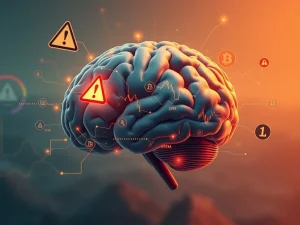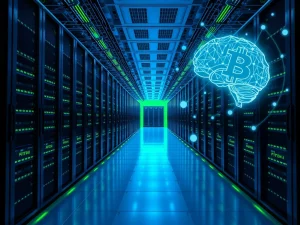Revolutionary Web3 Composability: Oraichain, Pinlink, and RSS3 Drastically Cut Development Costs

Imagine cutting your blockchain development costs by a staggering 60-70% while simultaneously accelerating your project timelines. This isn’t a pipe dream; it’s becoming a tangible reality thanks to the groundbreaking concept of Web3 Composability. The strategic integration of Oraichain, Pinlink, and RSS3 is pioneering a new era of efficiency and innovation in the decentralized landscape. For anyone building in Web3, understanding this synergy is key to unlocking unprecedented cost savings and faster deployment cycles.
Understanding the Core: What is Web3 Composability?
At its heart, Web3 Composability is the ability to seamlessly integrate and combine different decentralized protocols, applications, and services like digital ‘money legos.’ Instead of building every component from scratch, developers can leverage existing, robust, and audited building blocks. This modular approach is a cornerstone of Web3 innovation, fostering an environment where projects can rapidly iterate and build complex systems by snapping together specialized functionalities.
- Efficiency: Avoids redundant development efforts, saving time and resources.
- Innovation: Encourages new applications by combining existing functionalities in novel ways.
- Interoperability: Facilitates seamless data and functionality sharing across diverse platforms.
- Cost Reduction: Directly leads to lower development expenditures by reusing established components.
The Power Trio: Unpacking Oraichain Integration, Pinlink, and RSS3
The recent collaboration between Oraichain, Pinlink, and RSS3 serves as a prime example of Web3 composability in action. Each project brings a unique and vital piece to the puzzle, creating a powerful ecosystem for decentralized application development.
Oraichain: The Verifiable AI Engine
Oraichain is a leading blockchain platform focused on artificial intelligence (AI) and data oracle services. It provides a verifiable network where AI models can be deployed and their results validated on-chain. This is crucial for applications requiring high levels of transparency and trustworthiness in their AI outputs. Oraichain’s role is to act as the analytical powerhouse, processing data through custom AI models securely and verifiably.
Pinlink: The Decentralized Compute Marketplace
Pinlink operates a Decentralized Physical Infrastructure Network (DePIN) marketplace. It enables smart contracts to dynamically source high-performance computing resources, such as GPU power, from a global network of cost-effective providers. This democratizes access to powerful computing, making it more affordable and resilient than traditional centralized cloud services. Pinlink addresses the need for scalable and accessible computational power in the decentralized space.
RSS3: The Open Information Layer
RSS3 is building an Open Information Layer that provides real-time access to on-chain messages, social media posts, articles, and other open information. It eliminates the need for developers to build and maintain costly data indexing infrastructure, allowing them to focus on creating value from the data rather than collecting it. RSS3 acts as the foundational data provider, offering a comprehensive and decentralized stream of information.
How This Synergy Helps Reduce Development Costs
The integration of these three protocols exemplifies how Web3’s modular design can significantly reduce development costs and accelerate innovation cycles. Industry estimates suggest that combining RSS3’s data streams with Oraichain’s AI capabilities and Pinlink’s compute resources can cut development timelines by an impressive 60-70%.
Eliminating Infrastructure Overhead
Traditionally, building an application that processes large volumes of data requires substantial investment in data indexing, storage, and processing infrastructure. RSS3’s Open Information Layer removes this burden entirely. Developers gain immediate, real-time access to vast datasets without the need for custom data pipelines, saving immense time and capital.
Optimizing AI Development and Validation
Oraichain’s verifiable AI network streamlines the development and deployment of AI models. The on-chain validation ensures the integrity and trustworthiness of AI outputs, which can reduce the need for extensive manual auditing and debugging. This accelerates the AI development lifecycle and minimizes the risks associated with opaque ‘black box’ AI models, leading to more efficient and reliable applications.
Cost-Effective and Scalable Compute
Computationally intensive tasks, especially those involving AI, often incur high costs on centralized cloud platforms. Pinlink’s DePIN marketplace offers a decentralized alternative, allowing smart contracts to dynamically procure GPU power from a diverse network of providers. This modular approach not only optimizes resource allocation based on demand but also significantly lowers the operational expenditure for high-performance computing, directly impacting project budgets.
Building the Future: Real-World Applications with Decentralized AI
The combined power of Oraichain, Pinlink, and RSS3 opens doors to a new generation of applications, particularly those leveraging Decentralized AI. Consider a hypothetical decentralized content analysis application:
- Data Ingestion (RSS3): RSS3 provides the foundational layer, feeding real-time on-chain messages, social media posts, and articles into the system. This eliminates the need for developers to build complex data crawlers or indexing services.
- AI Processing (Oraichain): Oraichain acts as the analytical engine. Custom AI models, deployed on its verifiable network, process the raw data from RSS3. This could involve sentiment analysis, topic extraction, anomaly detection, or even content moderation. The on-chain validation of these AI results ensures transparency and trustworthiness, crucial for applications requiring credible outputs.
- Compute Power (Pinlink): For computationally intensive AI tasks, Pinlink’s DePIN marketplace dynamically sources the necessary GPU power from cost-effective providers. This ensures that even complex AI models can run efficiently and affordably, without relying on a single, centralized cloud provider.
Beyond content analysis, this synergy could power various applications:
- Decentralized Finance (DeFi) Analytics: Analyzing on-chain data for market sentiment, risk assessment, or predictive modeling.
- Web3 Reputation Systems: Building transparent and verifiable reputation scores based on user activity across various platforms.
- AI-Powered Decentralized Autonomous Organizations (DAOs): Enabling DAOs to make data-driven decisions based on verifiable AI insights.
- Intelligent Content Curation: Automatically curating and recommending content based on user preferences and on-chain interactions.
Accelerating Blockchain Innovation Through Modularity
This paradigm shift from building infrastructure from scratch to leveraging existing, specialized protocols is profoundly accelerating Blockchain Innovation. The ‘money legos’ approach signifies a move away from monolithic architectures towards more agile, modular systems. This not only speeds up development but also enhances the resilience and adaptability of Web3 applications.
The interoperability facilitated by Web3 standards ensures seamless data and functionality sharing across platforms. This means that an AI model developed on Oraichain can easily consume data from RSS3 and utilize compute from Pinlink, creating a self-sustaining ecosystem where each protocol enhances the utility of the others. This collaborative model fosters a more vibrant and interconnected decentralized web.
Navigating the Future: Challenges and Opportunities
While the benefits are clear, the path forward for such integrated systems is not without its challenges. The need for standardized APIs (Application Programming Interfaces) across different protocols is paramount to ensure smooth and consistent interactions. Furthermore, robust governance frameworks are essential to manage upgrades, resolve disputes, and ensure the long-term scalability and sustainability of these composable ecosystems.
Despite these hurdles, the opportunities presented by this level of composability are immense. By lowering technical barriers and fostering unprecedented collaboration, Oraichain, Pinlink, and RSS3 are not just building individual products; they are collectively accelerating the adoption of AI-driven decentralized applications and shaping the future of Web3 development.
Conclusion
The integration of Oraichain, Pinlink, and RSS3 stands as a powerful testament to the transformative potential of Web3 composability. By providing a decentralized framework for data access, verifiable AI computation, and scalable compute resources, this synergy drastically reduces development costs and accelerates innovation. As developers increasingly embrace this modular approach, we can anticipate a surge in sophisticated, efficient, and truly decentralized applications that will redefine the digital landscape. This is more than just an integration; it’s a blueprint for the next generation of Web3 development, making complex decentralized solutions more accessible and affordable than ever before.
Frequently Asked Questions (FAQs)
What is Web3 Composability?
Web3 Composability refers to the ability to combine and integrate different decentralized protocols, applications, and services like building blocks. It allows developers to reuse existing functionalities, saving time and resources, and fostering rapid innovation in the decentralized ecosystem.
How does Oraichain contribute to this integration?
Oraichain serves as the verifiable AI engine. It provides a blockchain platform where AI models can be deployed and their outputs validated on-chain, ensuring transparency and trustworthiness. It processes data from RSS3 using its AI capabilities.
What role does Pinlink play in reducing costs?
Pinlink operates a DePIN marketplace that allows smart contracts to dynamically source cost-effective, decentralized GPU power. This significantly reduces the computational costs associated with running AI models and other intensive tasks, compared to centralized cloud providers.
How does RSS3 enhance data access for Web3 applications?
RSS3 provides an Open Information Layer, offering real-time access to decentralized data streams like on-chain messages and social media posts. This eliminates the need for developers to build and maintain their own costly data indexing infrastructure, allowing them to focus on value creation.
What kind of applications benefit most from this synergy?
Applications requiring verifiable AI, extensive data processing, and scalable computing power stand to benefit significantly. Examples include decentralized content analysis, DeFi analytics, Web3 reputation systems, and AI-powered Decentralized Autonomous Organizations (DAOs).
Are there any challenges to this composable approach?
Yes, challenges include the need for standardized APIs to ensure seamless interaction between different protocols and the development of robust governance frameworks to manage the long-term scalability and sustainability of these interconnected ecosystems.









